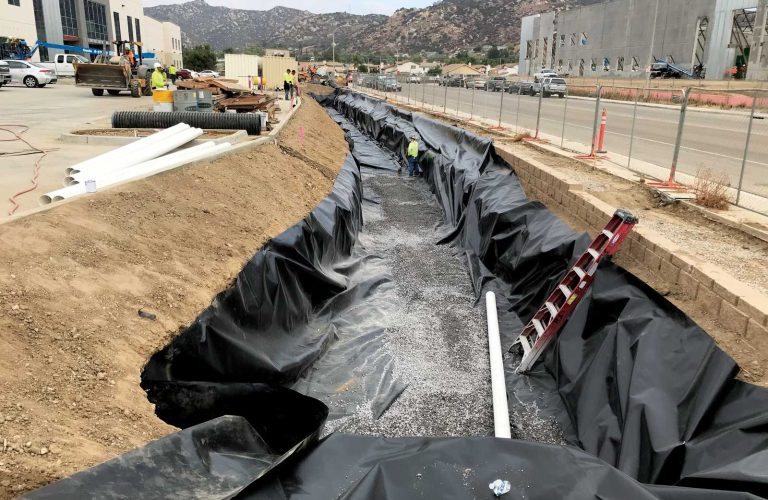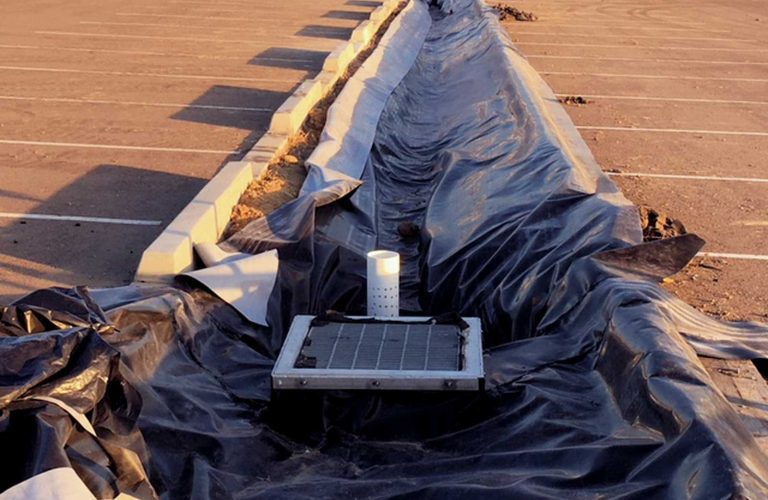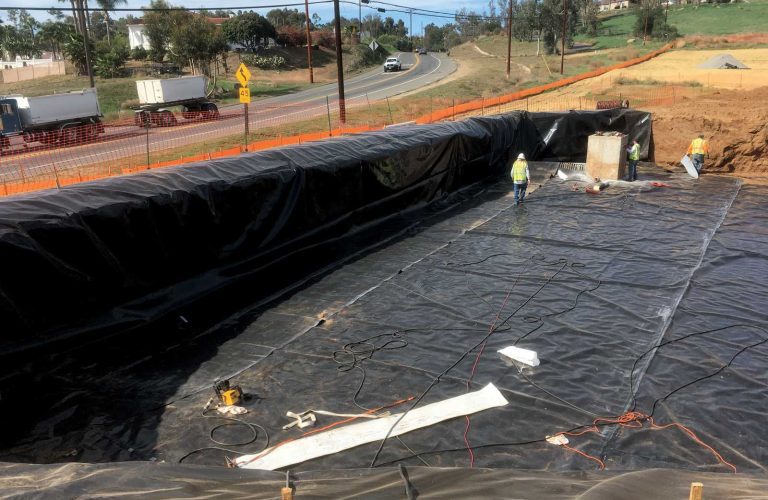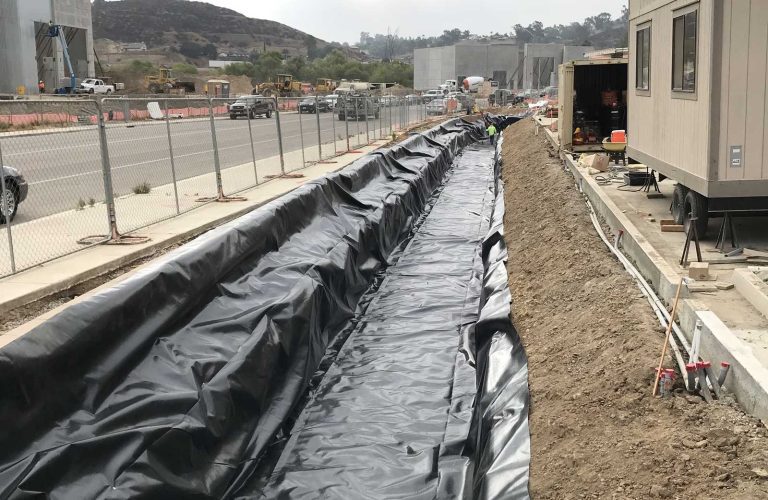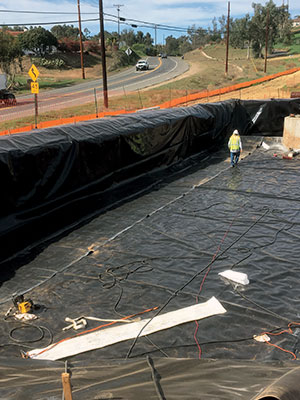Slow And Filter Stormwater Runoff And Improve Your Site’s Aesthetic
Also known as infiltration swales, Bioswales are a form of bioretention designed to slow surface water runoff and help remove stormwater pollutants. These low-maintenance systems transport large volumes of stormwater to a discharge point, slowing the velocity and filtering the water.
As an added benefit, bioswales help recharge groundwater. Bioswales can be used in many applications, including pollutant removal, drainage retrofitting, and runoff management.
What Is The Benefit Of Using A Bioswale?
Improved Aesthetics
Liven up your facility's landscaping while still addressing stormwater management. Bioswales allow for personalization with vegetation choice.
Drainage Retrofitting
Retrofit an existing drainage ditch into a Bioswale, improving the ditch aesthetics and increasing the amount of intercepted rainfall.
Runoff Management
A bioswale can reduce the runoff volume from a typical local road to about 25% of total rainfall.
Additional Features
- Reduce the volume of stormwater runoff
- Remove pollutants and sediment through filtration
- Provides a clearly defined drainage space
- Can be incorporated into green infrastructure
Product Details
Bioswales are a form of bioretention designed to slow surface water runoff and help in the removal of stormwater pollutants.
Downloads
Resources
Explore the resources available to help you acquire additional knowledge on our products. If you cannot find what you are looking for, we are here to help.
Case Studies
Discover a wide range of completed Layfield projects in various applications worldwide.
Webinars
Our Technical Services Team continuously creates and presents webinars and lunch presentations to better educate our clients. We would be happy to provide you and your group with a customized presentation based on your specific needs. We are also pleased to provide a series of pre-recorded webinars curated for this product group and shown below.
Low impact Development Strategies using Geosynthetic Materials
Low Impact Development (LID) strategies have transitioned from suggestions to requirements in recent years, presenting new design challenges for engineers. This technical presentation will discuss common design elements for LID applications and how innovative products can be incorporated to increase effectiveness, reduce maintenance requirements and increase system life expectancy. Presented by Daniel Lotufo and Amy Woods, Layfield Geosynthetics.
